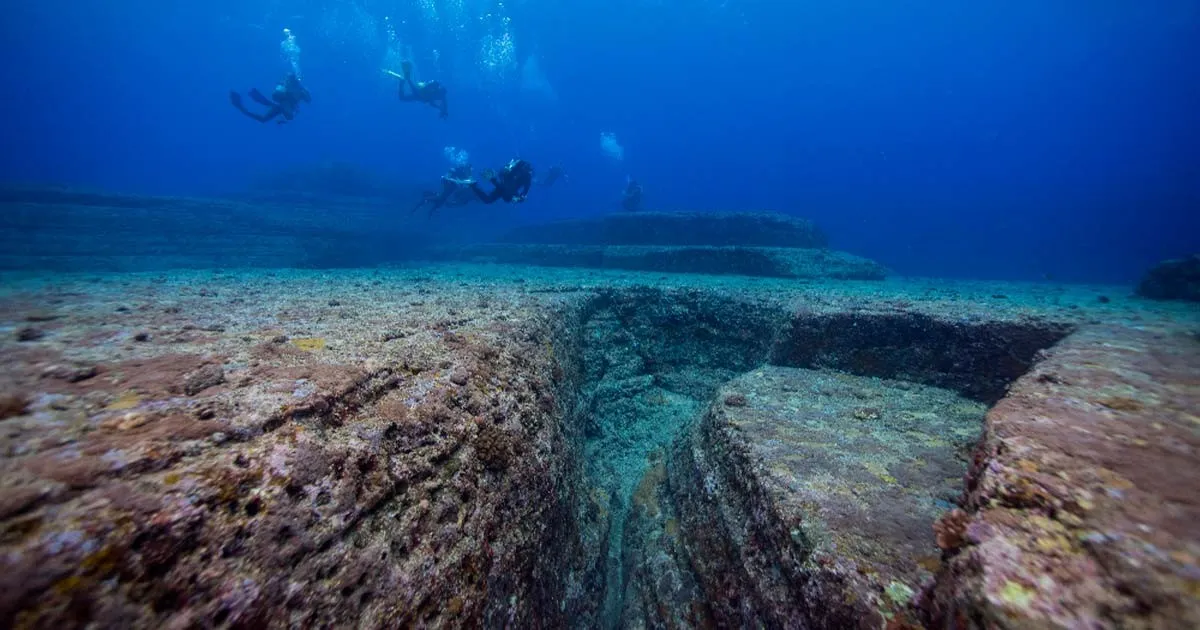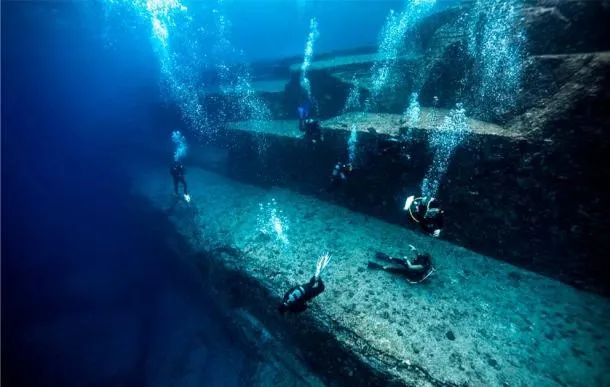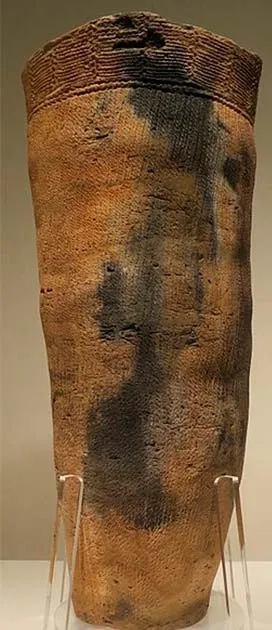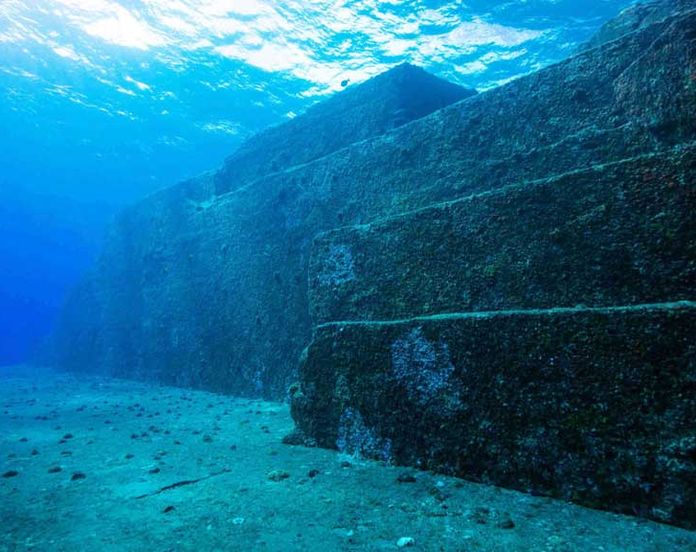Discovery and Initial Controversy
Nestled along the southern coast of Yonaguni, Japan, are enigmatic submerged ruins that have captured the fascination of researchers and ignited fervent debates. Believed to date back approximately 10,000 years, the origin of the Yonaguni monument remains shrouded in mystery. Hotly debated among experts, some assert that these formations are unmistakably man-made, while others, adopting a more conservative stance, attribute their creation to the forces of natural phenomena. This intriguing archaeological site continues to be a subject of exploration, sparking curiosity and speculation about its true origins.

Discovery of the Yonaguni Monument And Initial Controversy
The unique and awe-inspiring site was discovered in 1995 by a diver who strayed too far off the Okinawa shore and was dumb-struck when he stumbled upon the sunken arrangement of monolithic blocks “as if terraced into the side of a mountain.” The structure sparked instant controversy and attracted crowds of diving archaeologists, media, and curious hobbyists, none of whom were able to ascertain its identity.

Late in the following year, more serious attempts were made to gather data and map out the structure. The process revealed many surprising findings, including what appears to be a massive arch or gateway of huge stone blocks that appeared to fit together perfectly, right-angled joins, carvings, and what appeared to be stairways, paved streets, crossroads, and grand staircases leading to plazas surrounded by pairs of towering features resembling pylons.

Man-Made or Natural Formations?
As teams of expert divers fanned out from the south coast of Okinawa using grid-search patterns, they found five subsurface archaeological sites near three offshore islands. The locations vary at depths from 100 feet (30.5 m) to only 20 feet (6 m). Proponents of the view that the sites are man-made point out features such as two round holes (about 2 feet wide, 61 cm) and a straight row of smaller holes that appear to have been an attempt to split off a section of the rock by means of wedges, as in ancient quarries.

Professor Masaaki Kimura, a marine seismologist at the University of the Ryukyus, also pointed out a number of marks, such as a plus sign and a V shape, that appear to show that human beings worked the stone and could have been made by wedge-like tools called kusabi. While many of the features seen at Yonaguni are also seen in natural sandstone formations throughout the world, the concentration of so many peculiar formations and 90-degree angles in such a small area seems peculiar.

Natural Formations
Despite the unusual features displayed at Yonaguni, a small group of scientists who have studied the formation adamantly believe that the large blocks formed naturally as a result of tectonic movement and other natural phenomena. Geologist Robert Schoch of Boston University is one scientist who believes that the structures were naturally formed and acknowledges that they may have been used or modified by humans in the past. He points to the fact that the site lies in an earthquake-prone region and that earthquakes tend to fracture rocks in a regular manner. This view is also held by John Anthony West, who believes that the so-called walls are simply natural horizontal platforms that fell into a vertical position when the rock below them eroded and the alleged roads are simply channels in the rock.

Other examples of natural formations with flat faces and sharp, straight edges are the basalt columns of the Giant’s Causeway and the natural staircase formation on Old Rag Mountain.
Remnants of an Ancient Civilization?
Nevertheless, many scientists persist in their search for further evidence of their man-made nature with the belief that the stone structures are the remnants of an old city that must have existed around 10,000 years ago when the sea level was much lower than it is today, as it does not appear that the site ‘fell’ into the sea.
One proponent of this view is explorer and researcher Graham Hancock, who in his book titled “Underworld” writes: “It was the submerged structures of Japan that first awakened me to the possibility that an underworld in history, unrecognized by archaeologists, could lie concealed and forgotten beneath the sea” (Hancock 2002).
Hancock draws parallels between Yonaguni and other ruins found beneath the waters of Lake Titicaca and in Dwarka, off the coast of India, which offer further evidence for the existence of a vast underwater world containing structures stretching back to the dimmest chapters of human antiquity. If the structures at Yonaguni are indeed the remains of an ancient city, one possibility is the prehistoric inhabitants of Japan called the Jomon, who existed from about 12,000 BC to around 300 BC and developed a sophisticated culture.
The Jomon is often compared to pre-Columbian cultures of Pacific Northwest North America because, in both regions, cultural complexity developed within a primarily hunting-gathering context. Although their society was considered ‘primitive’ by the standards of later times, they were the first culture on Earth to develop pottery, according to mainstream theorists. Examples of this technology date back to the time when many of the submerged structures of Yonaguni would have been above water, and if they were in fact built by human hands, this would have been the time that their construction was underway.
Unveiling the Mystery
Researchers continue to investigate these unique and perplexing underwater worlds with regard to how they relate to our ancient past and to unravel the mysteries surrounding their true origins. Certainly, the investigation into the Yonaguni Monument remains a continuous process, and we eagerly anticipate the day when the mystery is ultimately unraveled. Employing cutting-edge technologies such as underwater sonar mapping, 3D modeling, and geophysical studies, researchers strive to unveil the origins of this enigmatic site. Patiently, we observe the ongoing efforts with anticipation.



